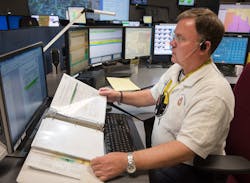Fire Dispatch: Tracking Premise Hazards Improve Safety
As the dangers faced by firefighters increase, agencies develop strategies to improve safety. One strategy of extreme importance is providing information to first responders about the hazards associated with the call location. On the surface this seems like a no-brainer, but in order to be successful, it’s important to understand the workings of a premise hazards program.
Premise hazards defined
While many departments identify water sources, utility shutoff locations, and key holders as part of a premise history file, the hazards having the biggest impact on safety usually relate to construction and contents (e.g., the presence of truss construction, previous fire or structural damage, fire protection systems and the status thereof, as well as the manufacture, process or storage of radiological, biological, and/or chemical materials). Note: Do not confuse premise hazards with premise history, which simply records the number and type of responses to a location, although these can also be helpful in knowing what to expect.
Sharing Information
As information about premise hazards is gathered, it is important to address who to share this information with and how. Potential hazards involving hazmat exposure or unsafe building conditions will be of benefit to other branches of service. Information about belligerents should be communicated to law enforcement, too. As we have unfortunately learned, many who carry grudges against uniformed services care little if the badge consists of a star, star of life or Maltese cross.
Where fire, police and EMS share a common or interfaced Computer Aided Dispatch (CAD) system, procedures can be put in place to access data across disciplines. Where hard copy information is involved, the process becomes more complex.
Another part of this discussion involves what items cannot or should not be shared. The release of individual criminal history is protected by federal and state guidelines, and law enforcement agencies are understandably protective of their security. Similarly, issues can be raised with the storage of health-related records.
When determining what information to store and share, all regulations must be taken into account. This oftentimes leads to emotional (and legal) exchanges. There are any number of infectious diseases that are likely present in the community, posing serious health risks. Should, as some suggest, the known presence of any health hazard be tracked under the banner of firefighter safety, or does the “use universal precautions” rule stand by itself without need for reminder? Legalities aside, there is no reason to assume that individuals will want to share certain information, even if policy permits.
Managing information
As much benefit as can be derived from premise hazards, over-reliance on them can also have negative effects. Information delivered while en route can never replace the knowledge gained through physical inspections, nor can every danger be expected to be identified beforehand. Firefighters, therefore, should never fall into the habit of using such programs as a sole source.
It’s also important to consider how much information is too much information. Many law enforcement officers have complained about the sheer volume of data available through mobile data terminals and the difficulty processing this information quickly and efficiently in a mobile environment. That’s why it’s important to develop standards as to the format and content of what is being tracked. And where multiple companies or multiple agencies utilize the same reporting system, it is important that the guidelines for collection, content, validation and reporting are universally used and understood. This standardization requires setting up regular reviews to ensure that all data is current and correct. Nothing is worse than no information—except bad information. Responses based on hazards that no longer exist or that have otherwise changed can obviously have an adverse impact.
Access to and distribution of premise hazards information has a direct impact on its effectiveness. Some departments maintain it as part on an inspection and pre-plan file that can be accessed through vehicular computers, microfiche or hard copy. Blueprints and material safety data sheet (MSDS) information may be included. Where CAD systems are utilized, it is important to recognize the limitations of the software involved. Some display this information to the dispatcher but not to the call-taker, which can reduce its usefulness. Other programs may not display hazards in a manner that is catches the dispatcher’s attention. As a result, there have been cases where telecommunicators have failed to relay critical information to units in the field. For this reason, it is imperative to have both a clear expectation of how these warnings are to be handled and a full understanding of any software limitations that may hamper this delivery. Making sure that the right data is available at the right time, to the right people, is the cornerstone of an effective premise hazards program.
About the Author

Barry Furey
BARRY FUREY, who is a Firehouse Contributing Editor, provides consulting and training services in emergency communications. He is the former director of the Raleigh-Wake Emergency Communications Center in North Carolina. During his 50-year public safety career, he has managed 9-1-1 centers and served as a volunteer fire officer in three other states. In 2005, Furey received a life membership in the Association of Public-Safety Communications Officials (APCO) International for his continued work in emergency communications. Furey was inducted into the Firehouse Hall of Fame in 2017.
